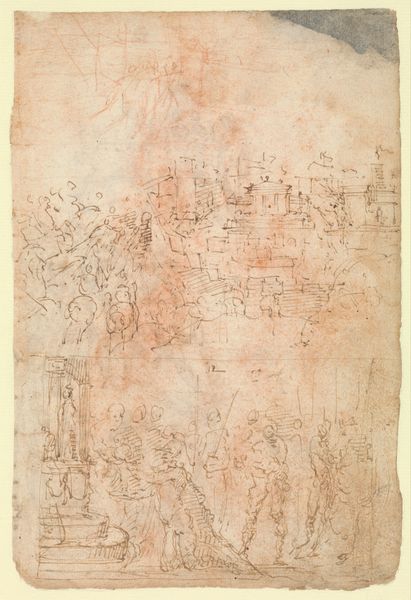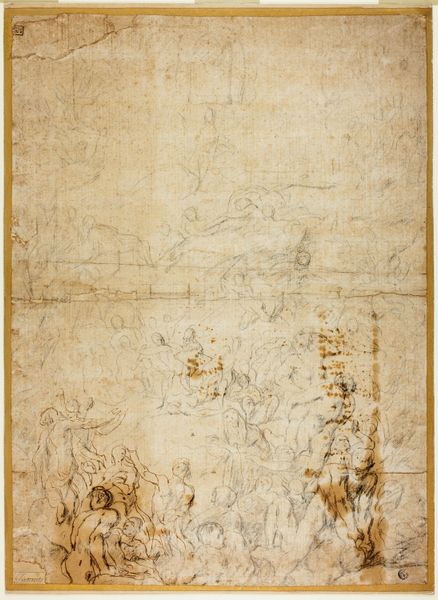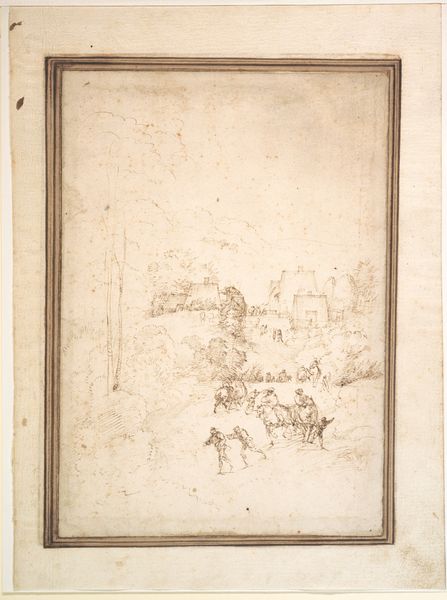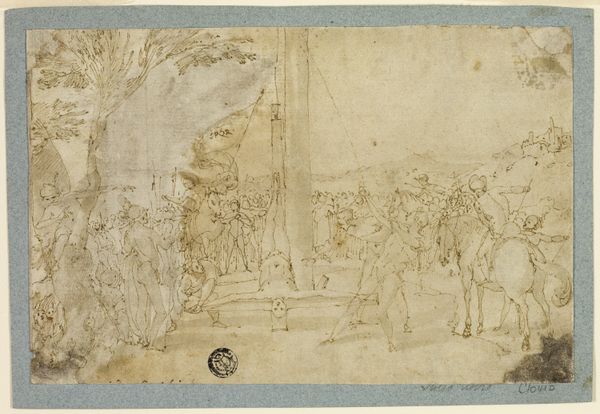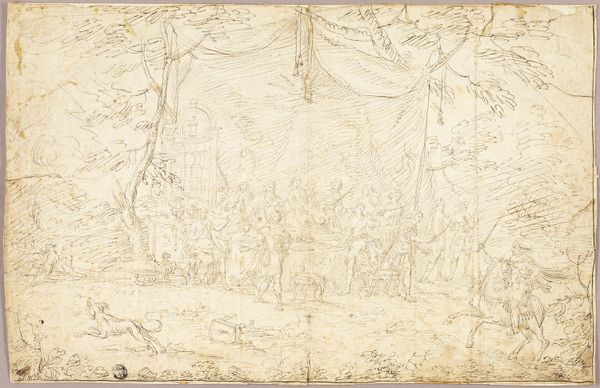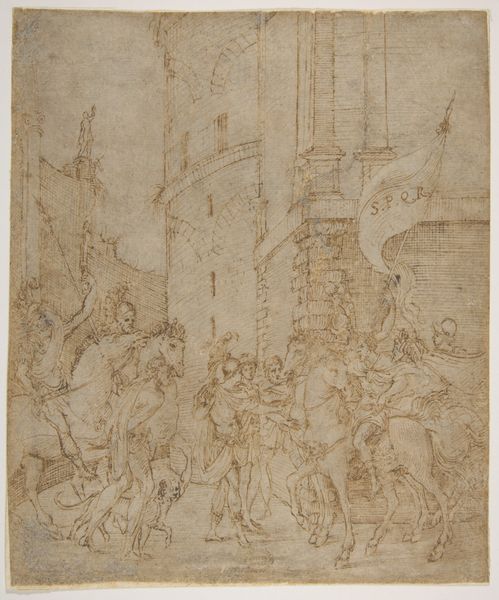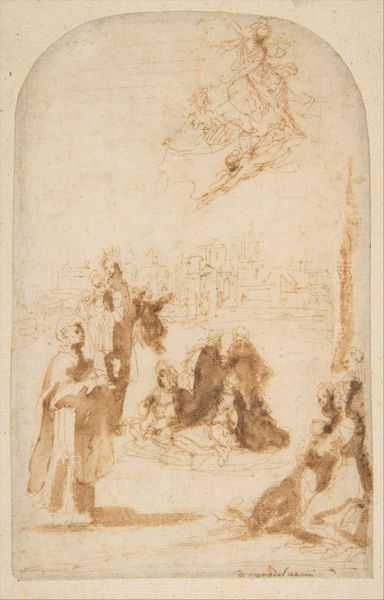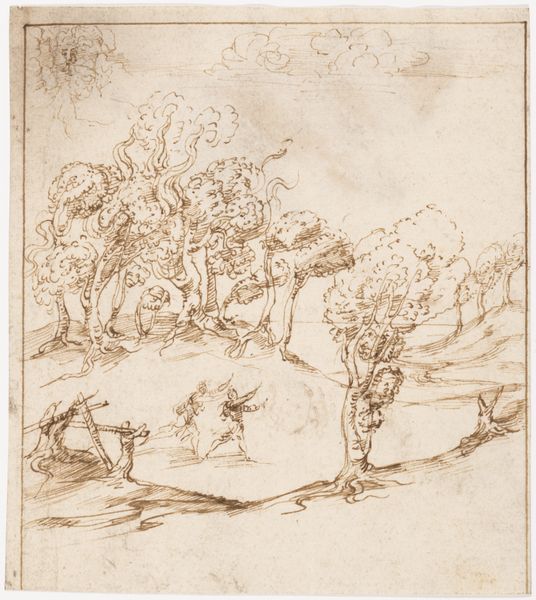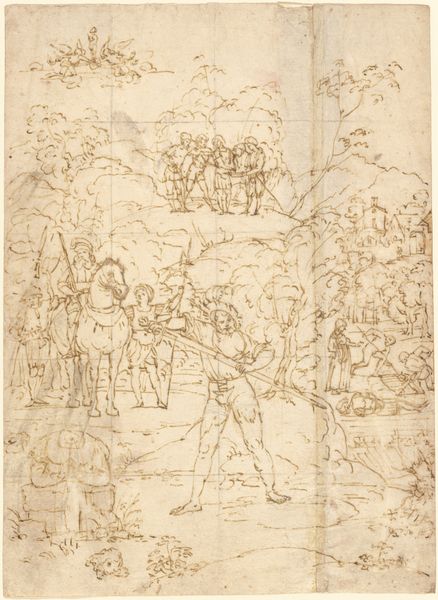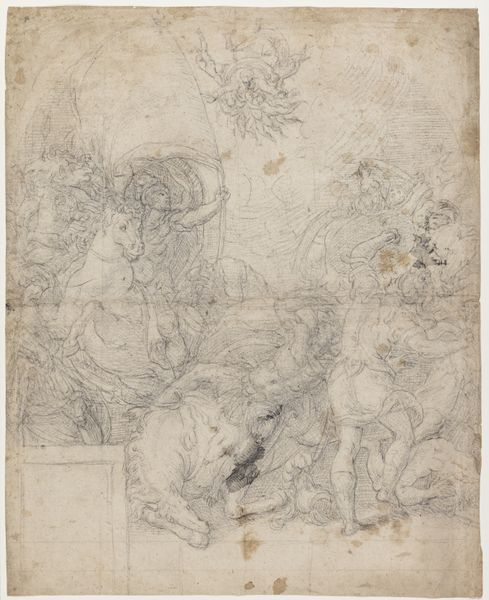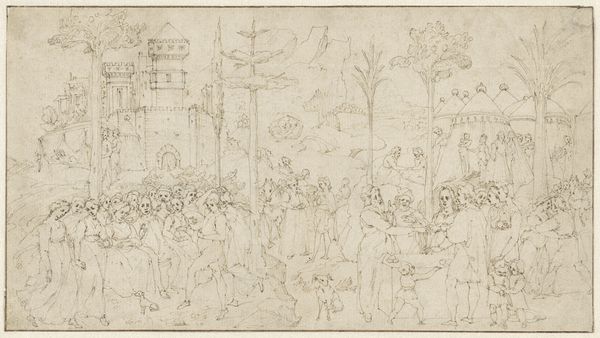![A Party in a Roman Villa [recto] by Pirro Ligorio](/_next/image?url=https%3A%2F%2Fd2w8kbdekdi1gv.cloudfront.net%2FeyJidWNrZXQiOiAiYXJ0ZXJhLWltYWdlcy1idWNrZXQiLCAia2V5IjogImFydHdvcmtzL2ZjMzAxNGViLTc5NjQtNDRlYS04YTkzLTVlYTQwZDJhYzFkYS9mYzMwMTRlYi03OTY0LTQ0ZWEtOGE5My01ZWE0MGQyYWMxZGFfZnVsbC5qcGciLCAiZWRpdHMiOiB7InJlc2l6ZSI6IHsid2lkdGgiOiAxOTIwLCAiaGVpZ2h0IjogMTkyMCwgImZpdCI6ICJpbnNpZGUifX19&w=3840&q=75)
drawing, ink
#
drawing
#
narrative-art
#
ink painting
#
landscape
#
etching
#
figuration
#
ink
#
ancient-mediterranean
Dimensions: overall: 28 x 21.3 cm (11 x 8 3/8 in.)
Copyright: National Gallery of Art: CC0 1.0
Curator: Welcome. Here we have a drawing entitled "A Party in a Roman Villa," attributed to Pirro Ligorio. The medium is ink. What are your first thoughts? Editor: It feels frenetic, a whirlwind of activity barely contained on the page. There's a sense of revelry, almost chaotic, but rendered with such delicate lines that it’s surprisingly gentle. Curator: Ligorio was a fascinating figure, a scholar and architect deeply invested in Roman antiquity. We see that here in his meticulous, though somewhat imaginative, reconstruction of a Roman villa, a space he conceived as central to social and political life. Editor: The architecture definitely feels like a stage. The figures, engaged in various acts of leisure—dancing, embracing, lounging—seem to be performing their roles within this constructed Roman ideal. I am interested in the hierarchy that is created, where some people are dancing together and others are left laying about. Curator: Exactly! Think about the patrons for whom Ligorio worked, often cardinals or other members of the elite. The drawing may reflect their aspirations, their desire to connect themselves to the grandeur of Rome, framing it as an extension of their own power and social standing. Editor: But at what cost? While there's beauty here, I also see a sort of curated escapism, an idealized fantasy built on very real, often brutal, historical foundations. Rome, after all, was built on conquest and slavery, a historical backdrop usually conveniently absent in these idyllic scenes. It’s hard for me to fully embrace the fantasy. Curator: I agree. There's a tension, isn't there? We see the visual splendor and are also prodded to think about the broader socio-political context. Ligorio’s work is a reminder that art often functions as a reflection of power, carefully constructing narratives that both reveal and conceal. Editor: It does make you wonder about who had the privilege to participate in the "party," and whose labor allowed for such leisure. Art provides a lens, sometimes a rose-colored one, through which to critically examine the power structures of past and present. Curator: Precisely. Thank you for that perspective. I believe this artwork encourages us to continuously investigate art's multiple facets and to question its role within historical and present-day society. Editor: Yes, to keep interrogating the narratives embedded in the art that shapes our understandings. Thanks.
Comments
No comments
Be the first to comment and join the conversation on the ultimate creative platform.
